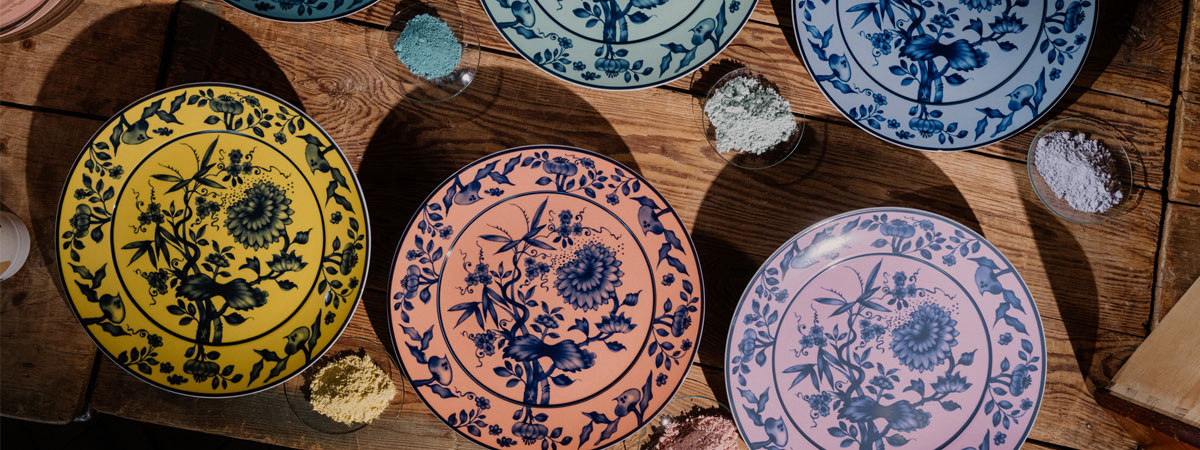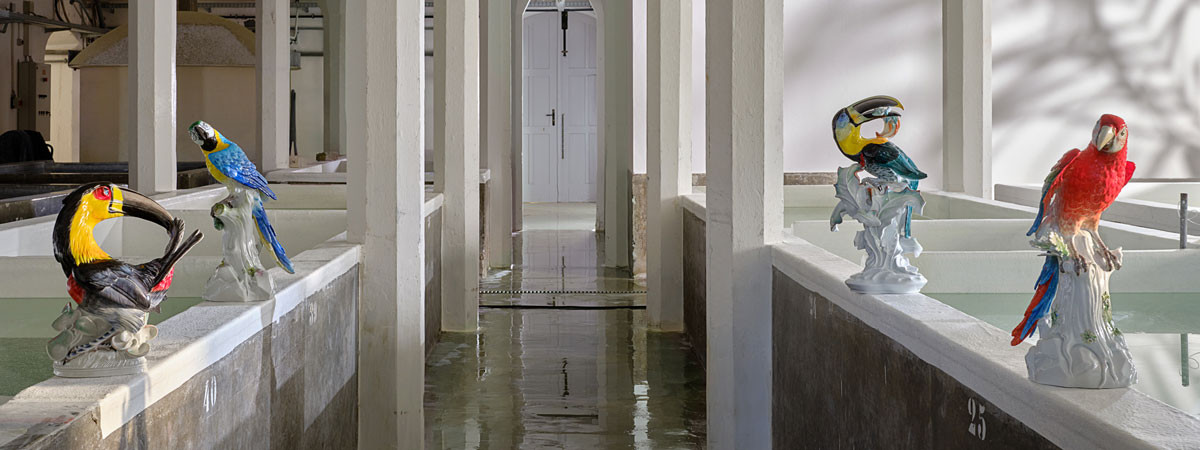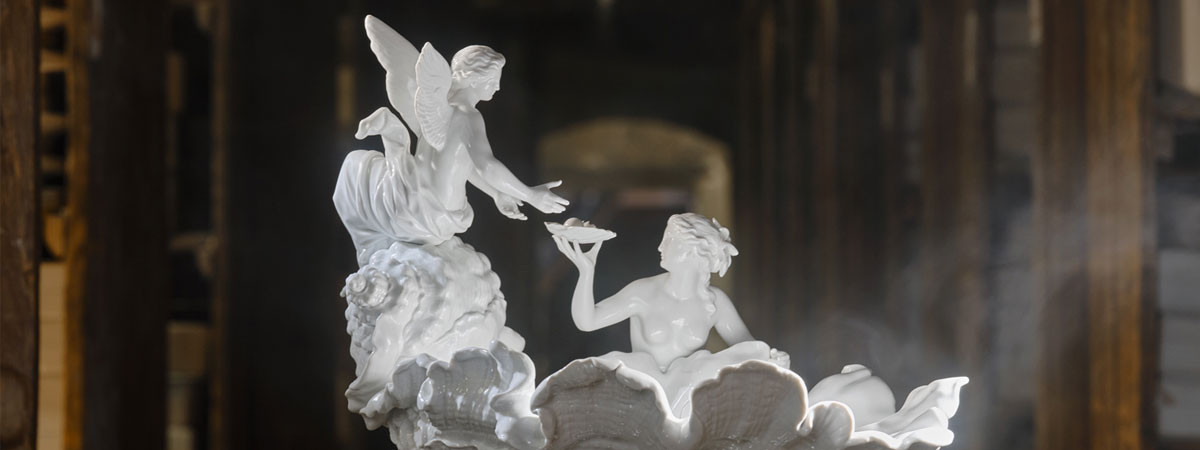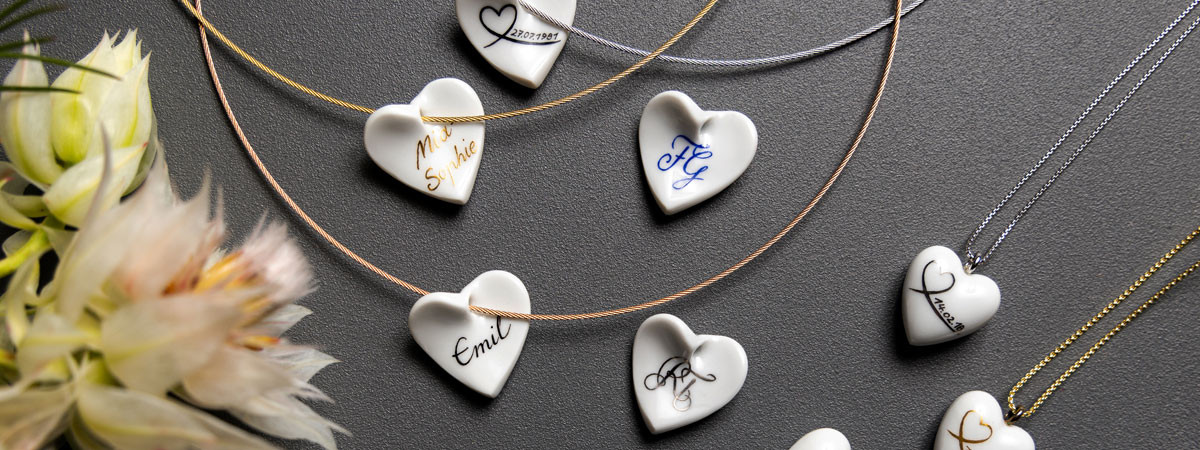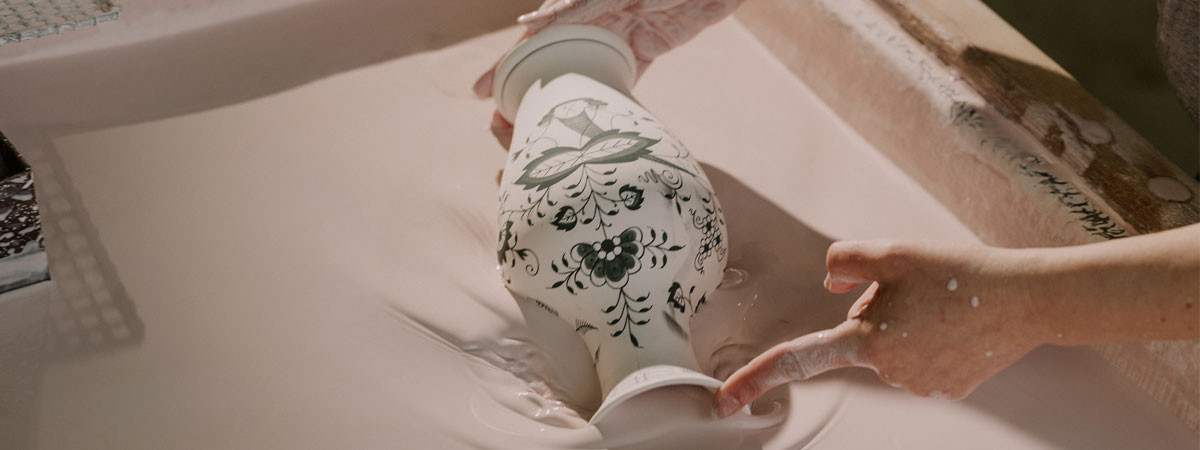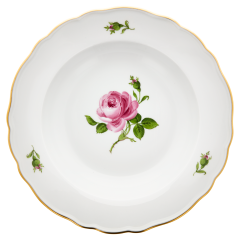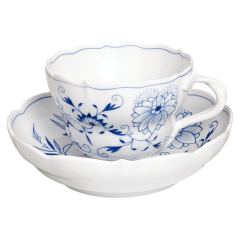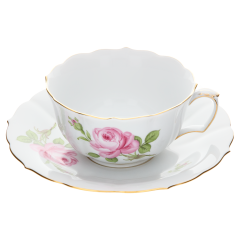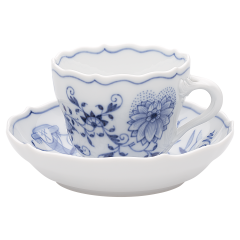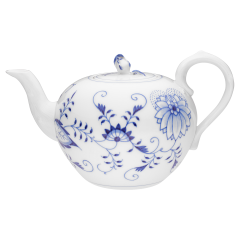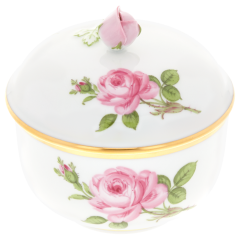NEW CUTOUT
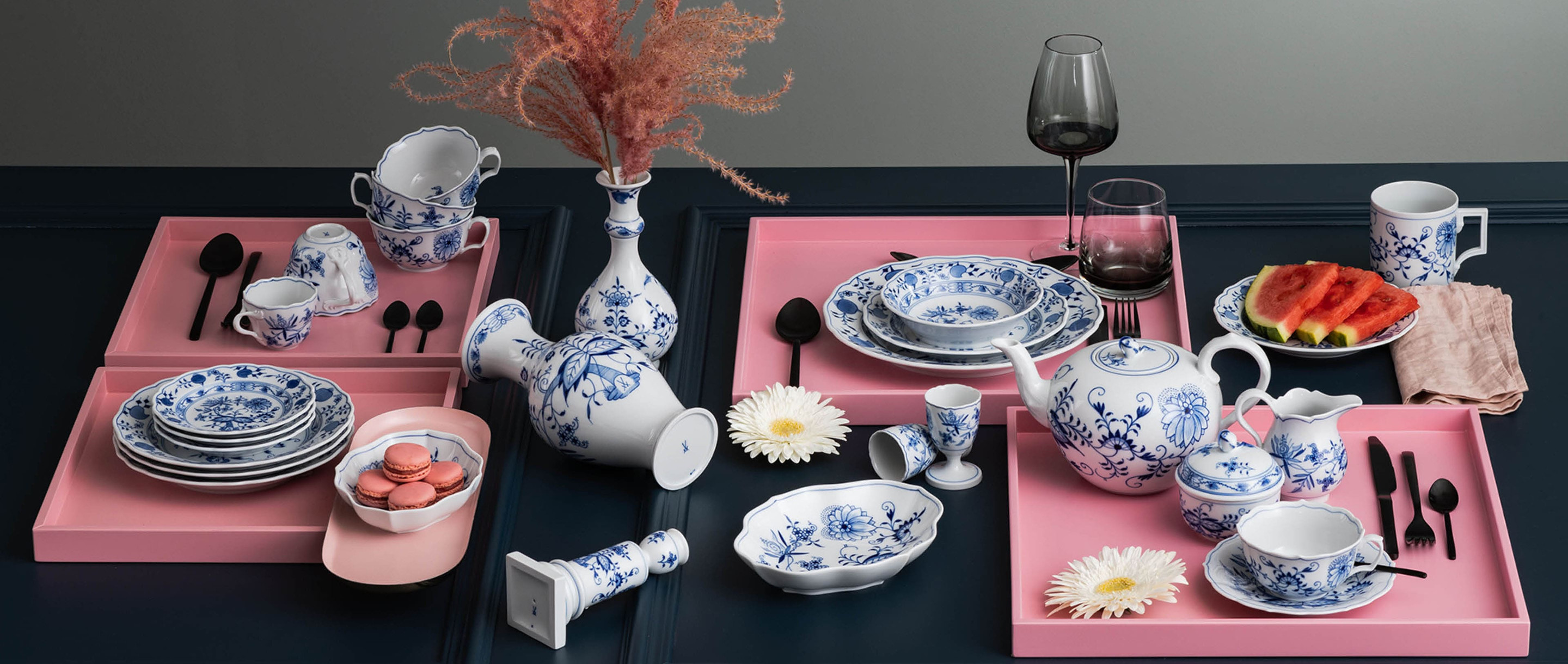
The predominant Chinese fashion in 18th century Europe, in the form of replicas and imitations of East Asian shapes and patterns, marked the beginning of the history of the Meissen porcelain manufactory. The manufactory’s momentum, however, quickly necessitated the introduction of new designs and patterns that not only moved away from earlier East Asian influences but would also satisfy the prevailing Baroque taste for lush opulence. The first artistic golden age of the manufactory began in 1730, during Johann Joachim Kaendler’s time at MEISSEN. For more than 40 years, Kaendler shaped the reputation of the manufactory as its artistic director, leaving it with a rich heritage of inimitable sculptures, figurines and table services. The oldest elements of Kaendler’s “New Cutout” table service were created around 1745. The delicate shape, reminiscent of flower petals, with a corrugated, pointed edge and bifurcated acanthus leaf handle is one of Kaendler’s true gems. A number of famous decors, such as the “MEISSEN Rose”, the “Onion Pattern”, and the "Green Vine Leaf Garland”, are equally at home on this shape, which, in its day, was considered almost modest and unobtrusively playful
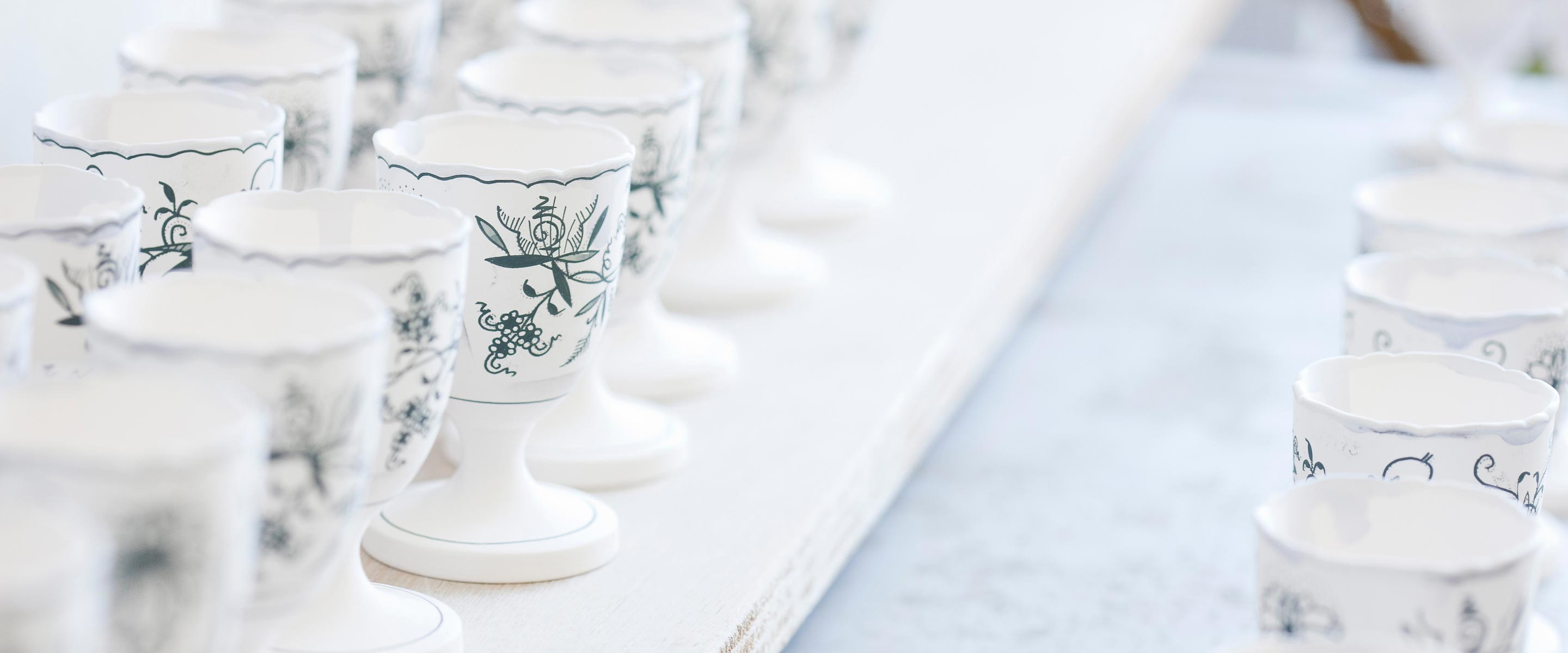
History
As artistic director of the Meissen porcelain manufactory, the trained sculptor Johann Joachim Kaendler created the first formal European design language for porcelain from 1731, exerting a lasting influence on European table culture.
-
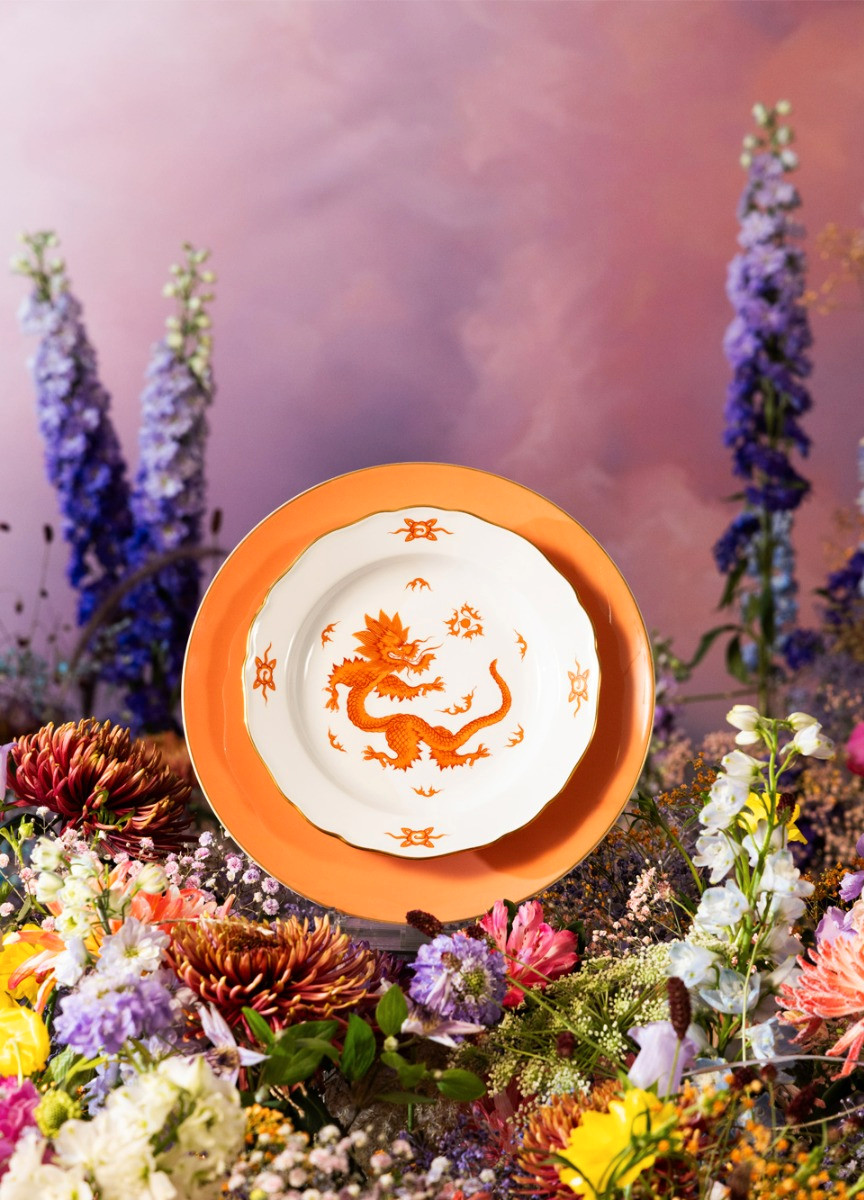 Ming DragonThe Ming dragon decoration combines masterful craftsmanship with stylish design and adorns the “Neuer Ausschnitt” dinner service, which was created by the famous Johann Joachim Kaendler - a classic of European table culture. The gently curved contours of the plate rim resemble delicate flower petals. This artistic detail makes the “New Cut-out” with Ming dragon decoration an aesthetic highlight on any table setting.
Ming DragonThe Ming dragon decoration combines masterful craftsmanship with stylish design and adorns the “Neuer Ausschnitt” dinner service, which was created by the famous Johann Joachim Kaendler - a classic of European table culture. The gently curved contours of the plate rim resemble delicate flower petals. This artistic detail makes the “New Cut-out” with Ming dragon decoration an aesthetic highlight on any table setting.
Experience the powerful symbolism of the dragon motif, which has characterized the world of Chinese porcelain since the Ming dynasty. As a symbol of strength, wisdom and change, the dragon in Chinese mythology combines supernatural wisdom, closeness to nature and the energy of Yang. Inspired by this tradition, the MEISSEN porcelain manufactory creates unique works of art with the Ming dragon decoration.
MEISSEN takes traditional craftsmanship to a new level with the “New Cutout” dinner plate with red Ming dragon decoration. The perfect symbiosis of masterful hand painting and innovative technology unites tradition and modernity in an unprecedented way.-
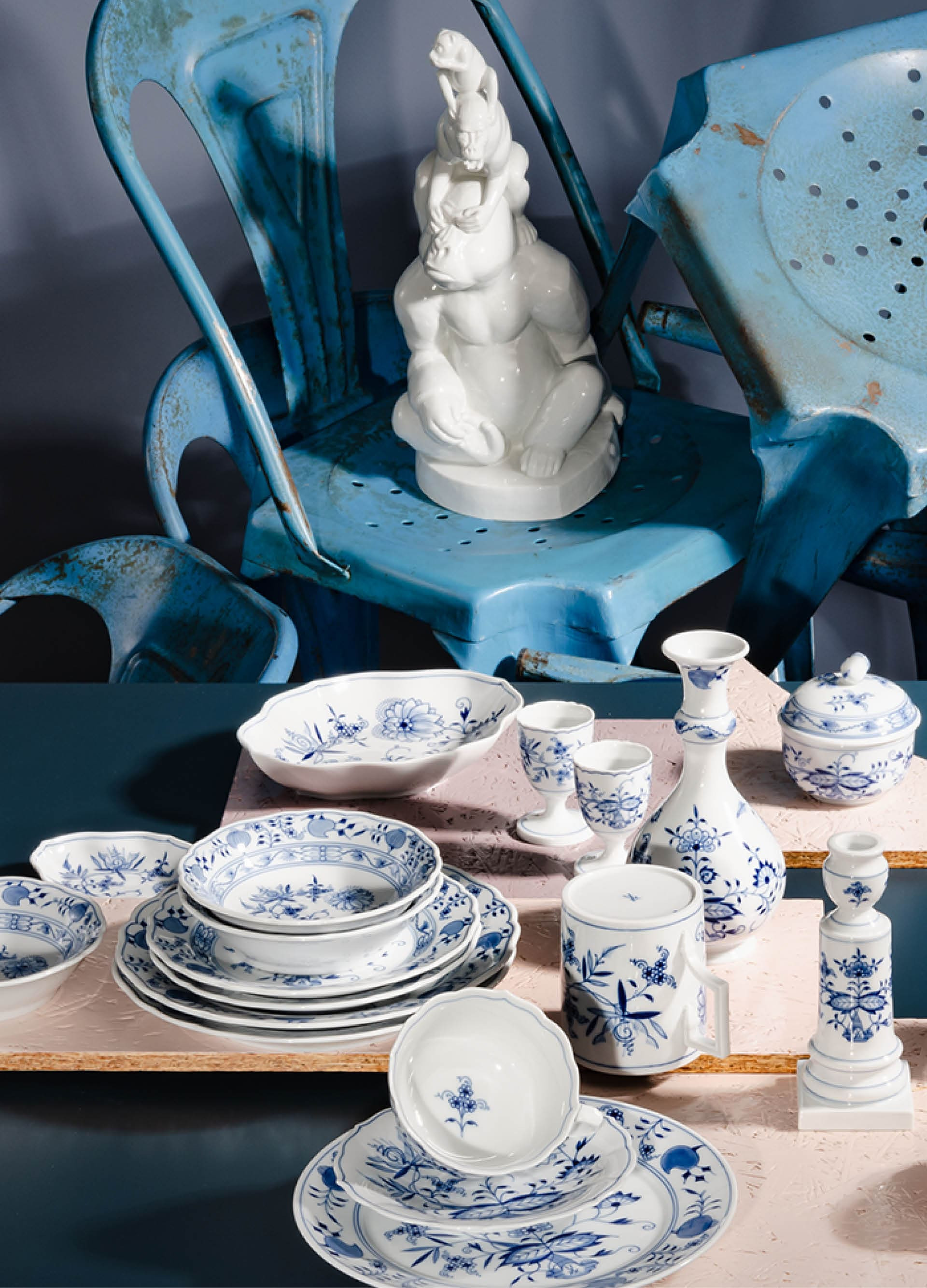 Onion PatternIt is the most successful blue painted pattern in the history of porcelain: in 1739, the radiant blue “Onion Pattern” was developed based on East Asian influences. True to original, the “onions” in the pattern are not in fact onions, but rather peaches and melons on the rim of the plate, and bamboo stalks and delicate chrysanthemum blossoms adorning the centre. In lieu of exotic fruits and flowers to use as templates for their creations, Meissen’s 18th-century artisans’ stylized renditions soon gave rise to their misconception as onions. To this day, Meissen’s “Onion Pattern” is applied to the porcelain by specially trained under-glaze painters. The manufactory’s own cobalt blue is the only paint used for the creation of all Meissen blue porcelain, just as it was 300 years ago. The different shades of blue are all realised with a single colour of paint.
Onion PatternIt is the most successful blue painted pattern in the history of porcelain: in 1739, the radiant blue “Onion Pattern” was developed based on East Asian influences. True to original, the “onions” in the pattern are not in fact onions, but rather peaches and melons on the rim of the plate, and bamboo stalks and delicate chrysanthemum blossoms adorning the centre. In lieu of exotic fruits and flowers to use as templates for their creations, Meissen’s 18th-century artisans’ stylized renditions soon gave rise to their misconception as onions. To this day, Meissen’s “Onion Pattern” is applied to the porcelain by specially trained under-glaze painters. The manufactory’s own cobalt blue is the only paint used for the creation of all Meissen blue porcelain, just as it was 300 years ago. The different shades of blue are all realised with a single colour of paint. -
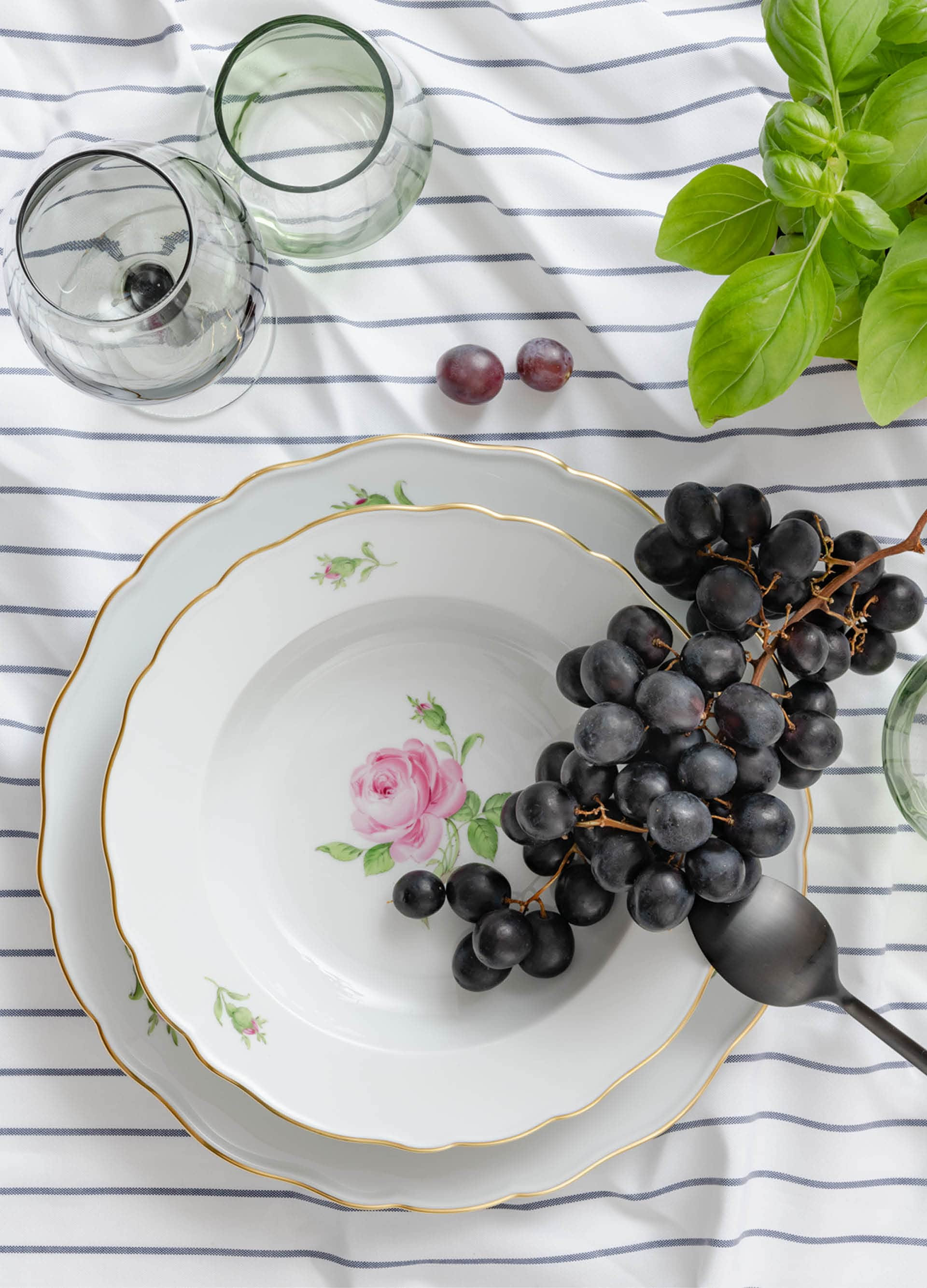 Meissen RosePink and white roses with purple centres gracefully intertwined on Meissen porcelain. As its own genre, floral painting on porcelain has a long tradition at the Meissen manufactory that has grown continually throughout the ages and continues on to this day. Much like other decorative motifs, the depiction of blossoming plants on porcelain dates back to the manufactory’s earliest artistic development, which was heavily influenced by East Asian porcelain art. Magnificent naturalistic botanical illustrations would later serve as templates for the flowers depicted on the earliest examples of European porcelain. The “MEISSEN Rose” first blossomed in the Biedermeier era, its style highly reminiscent of the evocative still life paintings by Georg Friedrich Kersting, who was a drawing teacher and the head of flower painting at that time.
Meissen RosePink and white roses with purple centres gracefully intertwined on Meissen porcelain. As its own genre, floral painting on porcelain has a long tradition at the Meissen manufactory that has grown continually throughout the ages and continues on to this day. Much like other decorative motifs, the depiction of blossoming plants on porcelain dates back to the manufactory’s earliest artistic development, which was heavily influenced by East Asian porcelain art. Magnificent naturalistic botanical illustrations would later serve as templates for the flowers depicted on the earliest examples of European porcelain. The “MEISSEN Rose” first blossomed in the Biedermeier era, its style highly reminiscent of the evocative still life paintings by Georg Friedrich Kersting, who was a drawing teacher and the head of flower painting at that time.
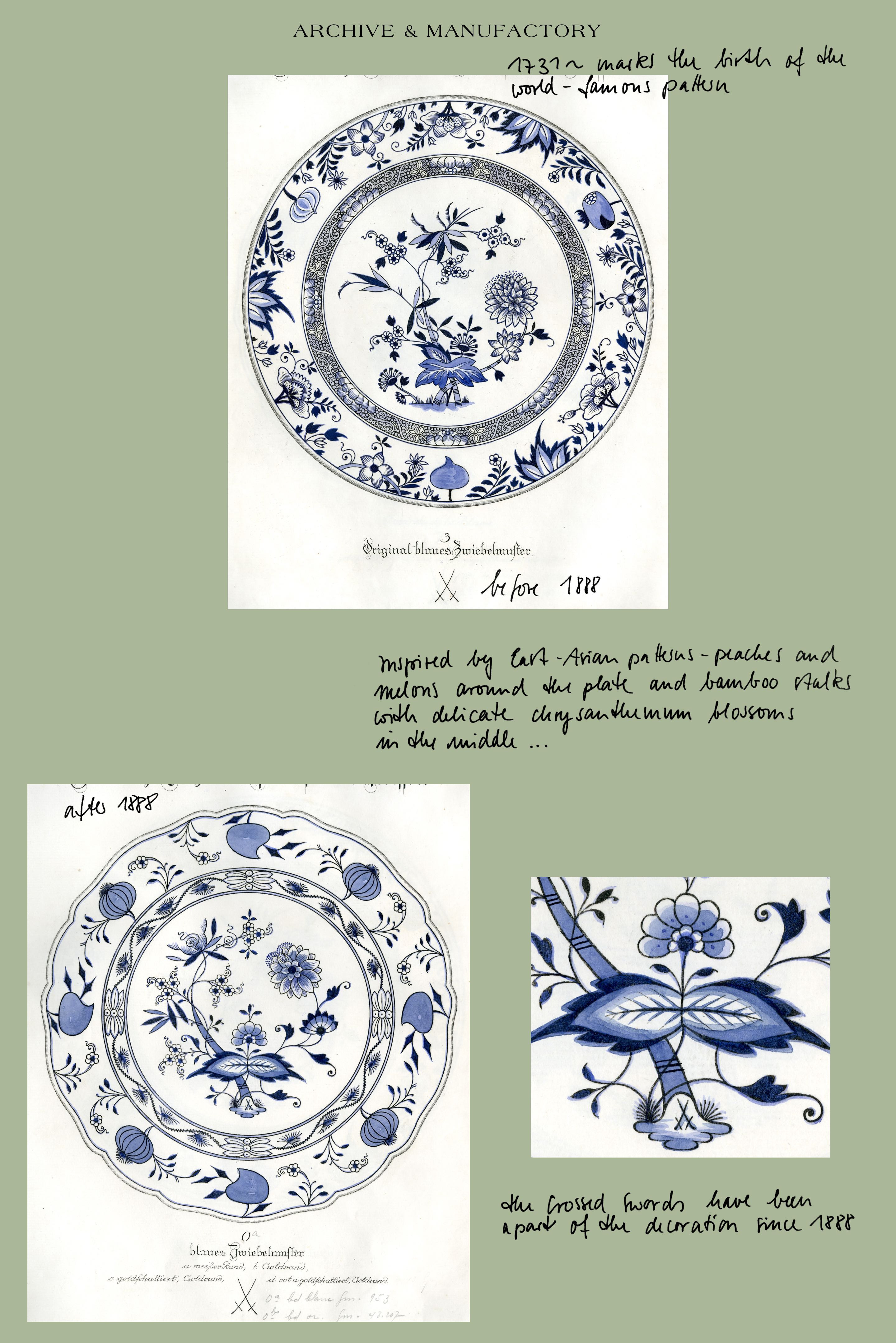 Campaigns
Campaigns-
01
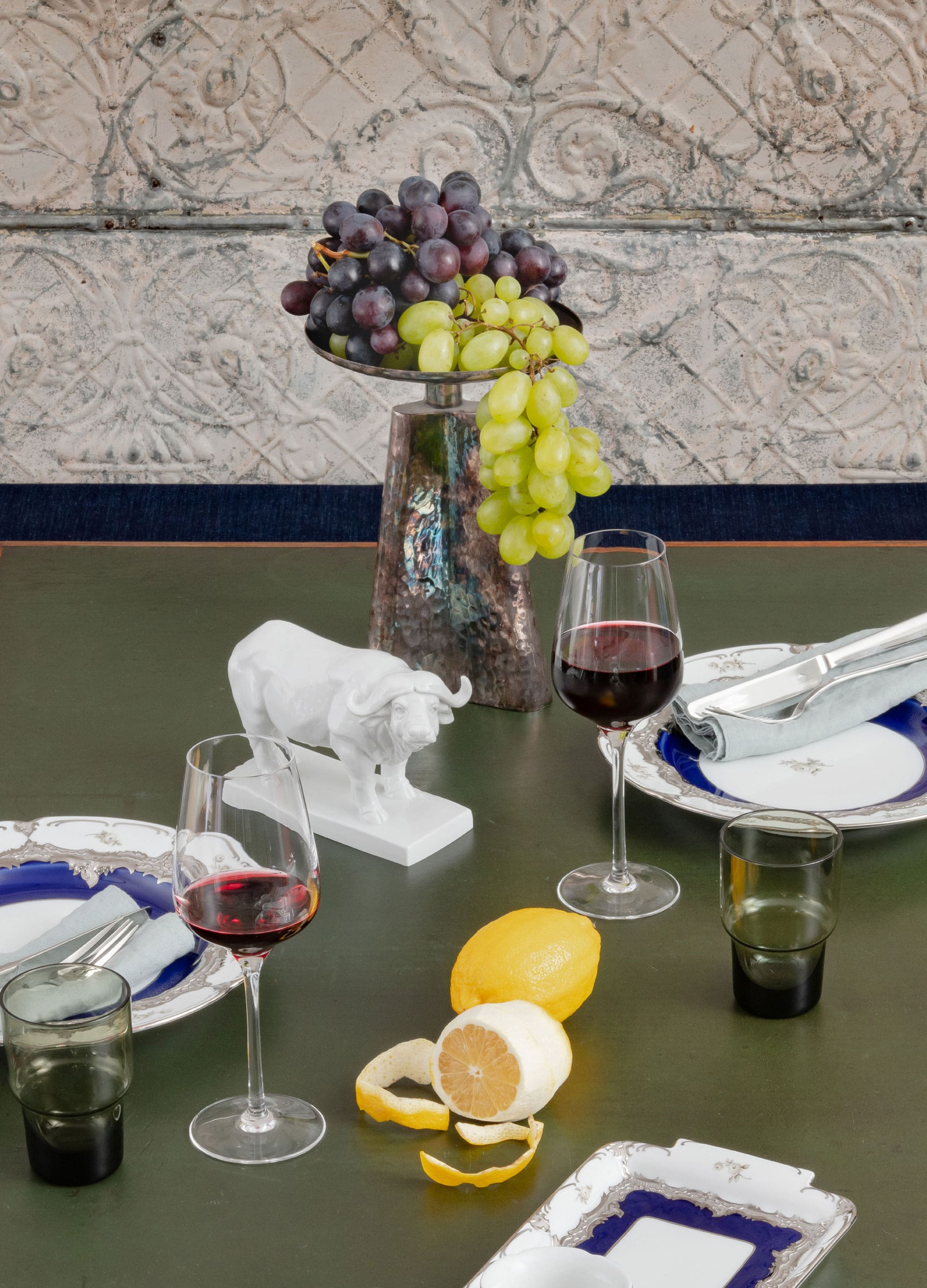 B-FormCreated between 1844 and 1855, „B-Form“ is a lavish masterpiece of European dining culture, resplendent in royal blue and elaborate reliefs with a 23-karat gold coating.
B-FormCreated between 1844 and 1855, „B-Form“ is a lavish masterpiece of European dining culture, resplendent in royal blue and elaborate reliefs with a 23-karat gold coating. -
02
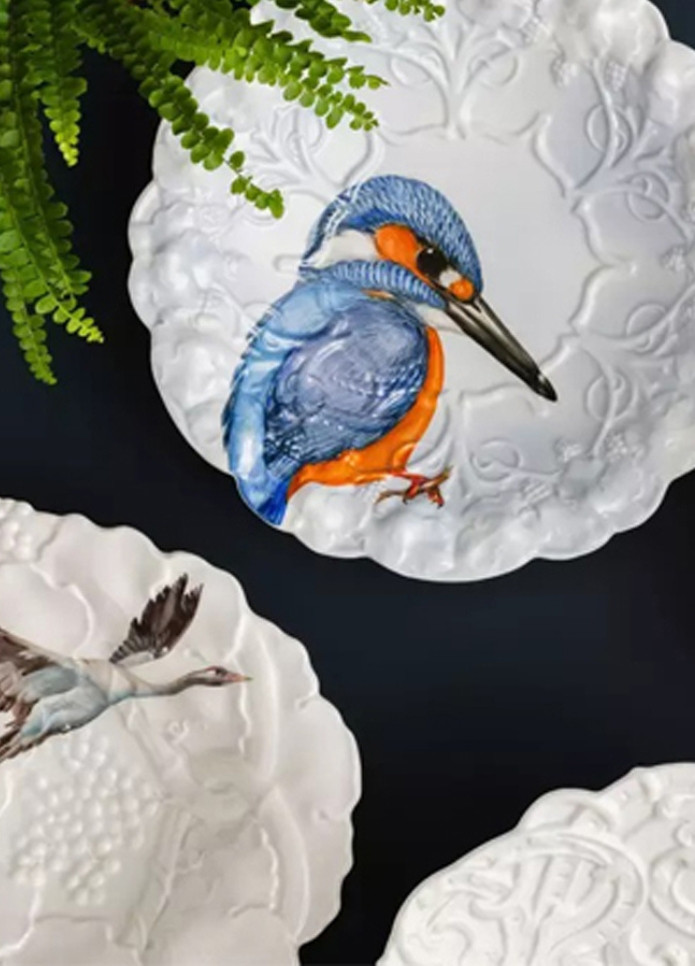 New SplendourA series of 19th-century decorative objects awakes from the archive, lavishly embellished with a contemporary rim-to-rim floral décor.
New SplendourA series of 19th-century decorative objects awakes from the archive, lavishly embellished with a contemporary rim-to-rim floral décor.
-

